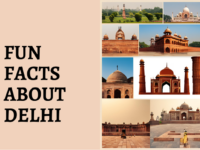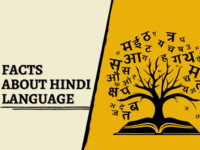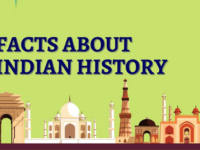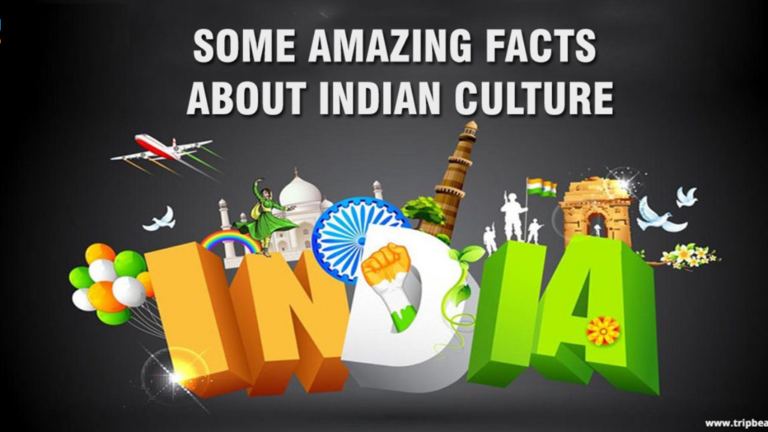Indian culture is one of the oldest and most diverse in the world, with a rich history and a variety of traditions, languages, and practices. Here are some fascinating facts about Indian culture:
1. Ancient Civilization
- India is home to one of the oldest civilizations in the world, the Indus Valley Civilization, which flourished around 2500 BCE.
- The Vedas, ancient texts written in Sanskrit, are considered some of the oldest religious scriptures in the world.
- India has contributed significantly to mathematics, including the concept of zero and the decimal system.
2. Diversity of Languages
- India is a multilingual country with over 1,600 languages spoken across the country.
- Hindi is the official language of India, and English is widely used for business and education.
- India recognizes 22 official languages under the Eighth Schedule of the Constitution, including Bengali, Tamil, Telugu, Marathi, and Urdu.
- Sanskrit is considered the classical language of India and the root of many languages in the Indo-Aryan language family.
3. Religion and Spirituality
- India is the birthplace of several major religions, including Hinduism, Buddhism, Jainism, and Sikhism.
- Hinduism is the third-largest religion in the world, with over a billion followers, primarily in India.
- The Bhagavad Gita, a 700-verse Hindu scripture, is one of the most important spiritual texts in Hindu philosophy.
- Buddhism, founded by Siddhartha Gautama (Buddha) in the 5th century BCE, began in India.
- India is also home to the Sikh religion, founded in the Punjab region in the late 15th century by Guru Nanak.
- The Kumbh Mela, a Hindu pilgrimage that takes place every 12 years, is the largest religious gathering in the world.
4. Festivals and Traditions
- India celebrates a wide variety of festivals, including Diwali (Festival of Lights), Holi (Festival of Colors), Eid, Christmas, and many more.
- Diwali, the most widely celebrated festival, marks the victory of good over evil and light over darkness.
- Holi, a spring festival, is famous for people throwing colored powders at each other in celebration.
- The Indian wedding ceremony is a grand and elaborate affair, often lasting several days, involving various rituals and celebrations.
- Onam is a harvest festival celebrated in Kerala, known for its grand feasts and boat races.
5. Art and Architecture
- Indian classical dance forms, such as Bharatanatyam, Kathak, Kathakali, and Odissi, have been practiced for centuries.
- The Taj Mahal, one of the Seven Wonders of the World, is an iconic symbol of India’s architectural heritage.
- India has a rich tradition of art, including painting, sculpture, and embroidery. The Madhubani and Warli styles are among the most famous.
- The ancient city of Varanasi, situated on the banks of the Ganges River, is a significant center for spiritual and cultural activities.
- Indian temples are known for their elaborate carvings, intricate architecture, and spiritual significance, like the Kailasa Temple in Ellora.
6. Cuisine
- Indian cuisine is renowned for its variety and use of spices, such as cumin, coriander, turmeric, and cardamom.
- Rice and wheat are staple foods in India, and each region has its unique dishes based on locally available ingredients.
- India is the birthplace of many popular dishes such as curry, samosas, biryani, and dal (lentil soup).
- Vegetarianism is widely practiced in India, with many people avoiding meat for religious or cultural reasons.
- The concept of Ayurveda, an ancient system of medicine, influences food choices and health practices in India.
7. Clothing
- The sari, a traditional garment worn by women, is an iconic part of Indian culture.
- The kurta-pajama is a common traditional outfit worn by men, while the sherwani is a formal garment often worn at weddings.
- The salwar kameez, a tunic paired with loose pants, is another widely worn outfit by women.
- India is known for its vibrant textile industry, including the production of silk, cotton, and wool. Indian textiles like khadi and pashmina are world-renowned.
8. Music and Instruments
- Indian classical music is based on ragas (melodic frameworks) and talas (rhythmic cycles), and it is divided into two main traditions: Hindustani (North Indian) and Carnatic (South Indian).
- The sitar, tabla, veena, and flute are some of the most prominent traditional Indian musical instruments.
- Bollywood, India’s film industry, is known for its musical numbers, with elaborate dance routines and songs.
- Indian music has greatly influenced global music, with artists like Ravi Shankar and A.R. Rahman gaining international recognition.
9. Literature and Philosophy
- India has a long tradition of literature, with ancient texts such as the Mahabharata and Ramayana being epic tales of mythology and history.
- The concept of yoga, which originated in India, is a spiritual and physical practice that has gained worldwide popularity.
- Indian philosophers have contributed significantly to ideas on metaphysics, ethics, and logic. Figures like Patanjali, Shankara, and Buddha are highly influential.
- Rabindranath Tagore, an Indian poet, became the first non-European to win the Nobel Prize in Literature in 1913.
- The Upanishads, a collection of philosophical texts, form the foundation of much of Hindu thought.
10. Society and Social Structure
- India has a complex social structure that has been influenced by the caste system, although it has officially been abolished in modern times.
- The concept of “atma” (soul) and “dharma” (moral duty) are central to Indian philosophy.
- The joint family system, where extended families live together, has been a traditional social structure in India.
- India’s education system includes traditional Gurukulas (ancient educational institutions) as well as modern schools and universities.
- India has made significant progress in technology and innovation, particularly in the IT sector, with cities like Bangalore becoming global tech hubs.
11. Nature and Environment
- India is known for its natural beauty, with diverse landscapes including the Himalayan mountain range, vast deserts, tropical forests, and coastal regions.
- The Ganges River is considered sacred in Hinduism and plays a crucial role in the lives of millions of people.
- India is home to a wide range of wildlife, including tigers, elephants, rhinoceroses, and endangered species like the Bengal tiger and Indian rhinoceros.
- The Indian government has launched various programs to protect the environment, such as the National Tiger Conservation Authority and efforts to reduce air pollution.
12. Technology and Innovation
- India is a leader in space exploration, with its space agency, ISRO (Indian Space Research Organisation), successfully launching missions like the Mars Orbiter Mission (Mangalyaan) and the Chandrayaan lunar missions.
- India is known for its vibrant tech startup ecosystem, especially in cities like Bengaluru, Hyderabad, and Pune.
- The country has a booming e-commerce market, with companies like Flipkart and Amazon India leading the way.
13. Economy
- India has one of the largest economies in the world and is a member of the G20.
- The country is one of the largest producers of textiles and garments, making it a key player in global trade.
- Agriculture plays a significant role in India’s economy, with crops like rice, wheat, and sugarcane being major staples.
- India is the world’s largest producer of milk, and dairy farming is an essential part of the economy.
- The services sector, including IT, telecommunications, and financial services, contributes significantly to India’s GDP.
14. Hospitality and Etiquette
- India is known for its tradition of hospitality, with the phrase “Atithi Devo Bhava” meaning “The guest is God.”
- Indian culture places a strong emphasis on respect for elders, and it is common to greet elders with the phrase “Namaste” while folding the hands in prayer-like fashion.
- Indian hospitality often involves offering guests food and drinks as a sign of respect and warmth.
15. Modern Indian Society
- India has one of the youngest populations in the world, with a significant proportion of the population under the age of 30.
- India is becoming increasingly urbanized, with the growth of megacities like Mumbai, Delhi, and Kolkata.
- The country is making strides in gender equality, with women breaking barriers in education, business, and politics.
- The fashion industry in India blends modern trends with traditional elements, creating a unique fusion of styles.
16. Global Influence
- Bollywood films are widely watched not only in India but across Asia, Africa, and even in the West.
- Indian cuisine has become popular worldwide, with dishes like curry, tandoori, and biryani being served in restaurants globally.
- Yoga, which originated in India, is practiced by millions of people around the world.
- The influence of Indian spirituality and philosophy has spread globally, with many people adopting practices such as meditation and mindfulness.
17. Yoga and Ayurveda
- Yoga is not just a physical exercise but a spiritual practice that encompasses postures (asanas), breathing techniques (pranayama), and meditation.
- Ayurveda, the ancient system of medicine, is still widely practiced in India and around the world.
- Ayurveda focuses on balance within the body and mind, using natural remedies, diet, and lifestyle changes to promote health and well-being.
18. Contributions to Global Knowledge
- India has contributed significantly to the fields of mathematics, astronomy, and medicine, with figures like Aryabhata, Brahmagupta, and Sushruta making key advancements.
- The concept of zero and the decimal system originated in India, revolutionizing mathematics.
- India was the birthplace of the concept of the “atomic theory” through the teachings of ancient philosophers like Kanada.
19. Sports
- Cricket is the most popular sport in India, with millions of fans following domestic and international matches.
- India has also excelled in sports like field hockey, badminton, and wrestling on the global stage.
- The Indian Premier League (IPL) is one of the most-watched cricket tournaments in the world.
20. Indian Philosophy and Thought
- Indian philosophy emphasizes the interconnectedness of all life and the concept of “ahimsa” (non-violence).
- Concepts such as karma (the law of cause and effect) and moksha (liberation from the cycle of rebirth) are central to Hindu, Buddhist, and Jain thought.
These facts provide a glimpse into the vast and diverse cultural landscape of India, which has shaped not only the subcontinent but the world in many profound ways.






















0 Comments